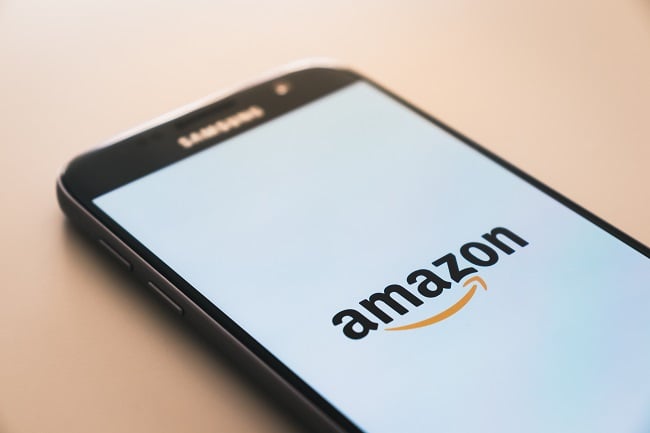How and where are you selling your product or services? This is your route to market. And it's just as important - if not more important, than your product itself.
Your route to market needs to work for your customer, and the best or right one, is the one that makes it easiest for a new customer to find you... if you get this wrong they'll go straight to your competitors and buy from them instead.
In todays marketplace it is easy to get left behind or put yourself in danger by sticking to only what you've always done or known. It's a good idea to take new opportunities, find new channels or routes to market and gain more market share.
By using more than one route to market you can diversity and tailor your strategy in one go, you could also improve your sales figures, make your business more visible and keep ahead of competitors. It is critical to keep reviewing your routes to market regularly because customers needs and habits are constantly changing and what was working yesterday may not work tomorrow.
We have put together a guide with an overview of the various routes to market available, and a framework for choosing which new routes to test.
Here’s everything you need to know...
Direct selling
Direct selling cuts out the middle man or intermediary. Rather than relying on a third party you could sell directly to customers via your website, phone, sales team or from a retail space.
If you’re selling niche, highly technical or industry-specific products, this route is likely to be an important one. In meeting customers face-to-face, you’ll have the chance to explain complex products and features, and develop your relationship with them.
It’s important to remember that direct selling requires more staff than other routes to market. Whether on the telephone or the shop floor, you’ll need salespeople trained to sell your product.
Distributors and wholesale
Selling to wholesalers and distributors is a cost-effective means of selling large quantities of a product. They buy from you, in bulk, and sell your products on to other customers or businesses.
It is more effort to sell 100 separate units than selling 100 units to one buyer - but there are also two other factors to consider:
- lower profit margins
- your brand.
If you sell wholesale your end-user most likely doesn't know who you are. This route to market is not advisable if brand building and customer relationship building are high on your strategic objectives. It is a tough task to manage how your brand is presented in a wholesale environment, and distributors need to be closely managed to control brand guidelines. One example of how this is done very well is car dealerships - it is an extreme franchise variation of this model, but the dealerships are closely monitored and have very strict brand guidelines to adhere to.
Website sales
You can buy almost anything with the click of a button these days, and in In 2017, 1.66 billion of us shopped online – this figure is predicted to hit 2.14 billion by 2021.
Online sales overcome the obstacles of time, distance and location/rental overheads. All that's needed is a website, payment system and a means of directing people to your site.
The downside to consider is delivery charges, you will need to factor this into your pricing or offer an affordable delivery service or click and collect service for your customers. Remember that there are customers who prefer physical shopping, and also those who are suspicious of online fraud - if online selling is your only route to market you may lose these customers.
Online marketplace sales
eBay has 164 million active buyers and Amazon has over 183 million visitors per month. If you list your products on these sites you could increase your visibility and sales figures as this is a ready made audience who may come across your products when searching for other similar items. If you convert these customers and they become loyal to your brand you could increase your customer base drastically, especially if your product is a repeat purchase product.
The drawback? Cost. These sites take a large percentage of each sale as their fee, so although you may see a large sales spike, it's important to work out your profit margins. If you have low margins it may not be worth your while so make sure that you understand the full fee structure. Amazon, for example charge not only a 15% sales fee for most product categories but they also charge a listing fee per product.

It is in an online marketplace's best interest to focus on products and not specific brands, so they often enforce a level of control over businesses - controlling the amount of direct communication with customers and also which items they allow you to sell.
For these reasons, it’s important to review the terms of your engagement with any online marketplace on a regular basis – to ensure that their business is still working in the interests of your business. Otherwise, it’s time to choose another route to market.
Distance selling
This route still has it's place for B2B businesses - catalogues and direct mail are easy and accessible ways to showcase products.
This channel is particularly effective if you have a wide range of products with different specifications - customers are given time and space to discover or compare without being 'sold to'. However, it is always a good practice to combine distance selling with another route to market, and with other marketing tactics in order to stay top of mind and close the sale. For example distance selling and online sales can work well together - whether through online marketplaces or website sales, and work even more effectively if they are reinforced with an email campaign.
The customer's experience can also be improved by using high quality design and paper if you are selling via print catalogues - especially if your brand sells high value items or experiences. This is not relevant for lower cost or value brands, like those selling power tools.
Older generations, and also some younger too, sometimes enjoy tangible sales material - keep this in mind so that you can cater to your customers needs and preferences.
Combination selling
Successful B2B or B2C brands all use multiple channels to sell their products – ’combination selling’. Using a variety of routes to market maximises the number of target customers you can reach, while also helping your business ‘learn’ which routes work best for your offering.
For example, if you sell via your own website and a retailer’s site, you’ll be able to see which performs better, allowing you to adjust your strategy accordingly.
Ensure that price and offerings are consistent across all of your channels. It will affect the credibility of your brand if a customer finds your product cheaper after purchasing it on another site.
How to choose the right route to market
Is there a good and bad route to market? No - only suitable and less suitable ones... and what works today may not work tomorrow so it's essential to keep reviewing your choice and make changes.
Your customer journey is really important - understanding customer needs at every stage of their journey with you will help you in understanding your audience better and knowing which route to market is best for your business.
Here are a few steps to get you started:
- Do some research. The best way to know where your customers are making their purchases, and how they are going about it, is by asking them. Do a few focus groups and questionnaires to understand your customers expectations.
- Set a strategy to test a few different routes - this takes the guessing out of the game, and you can make educated decisions on which routes to take based on their buying habits
- Promote these routes to your existing customer base, database, social media followers etc first - this will give you great feedback and your level of ROI.
- Determine which routes are profitable and which are a waste
- Pick your best performing routes and tweak your strategy accordingly so that these become your focus
- Retest, evaluate and reevaluate continually - don't just assume that your customers needs will stay the same forever and don't be scared to try alternative routes or scrap old/ non performing routes.
- Always apply the elimination and innovation rule - no matter how well things are going
It may be tempting to follow in competitors footsteps or focus on product only, but you will find that investing the time and energy needed to get the right route to market for YOUR business will set a solid foundation for your sales team. Remember, customer insights are key.
If you’d like some help with your marketing strategy, and in particular finding the right routes to market - talk to us. At The Marketing Centre, we have a large team of highly skilled, part-time proven Marketing Directors ready to share their abundance of diverse know-how with you.
Give your growing business the expertise it deserves. Contact us today.



